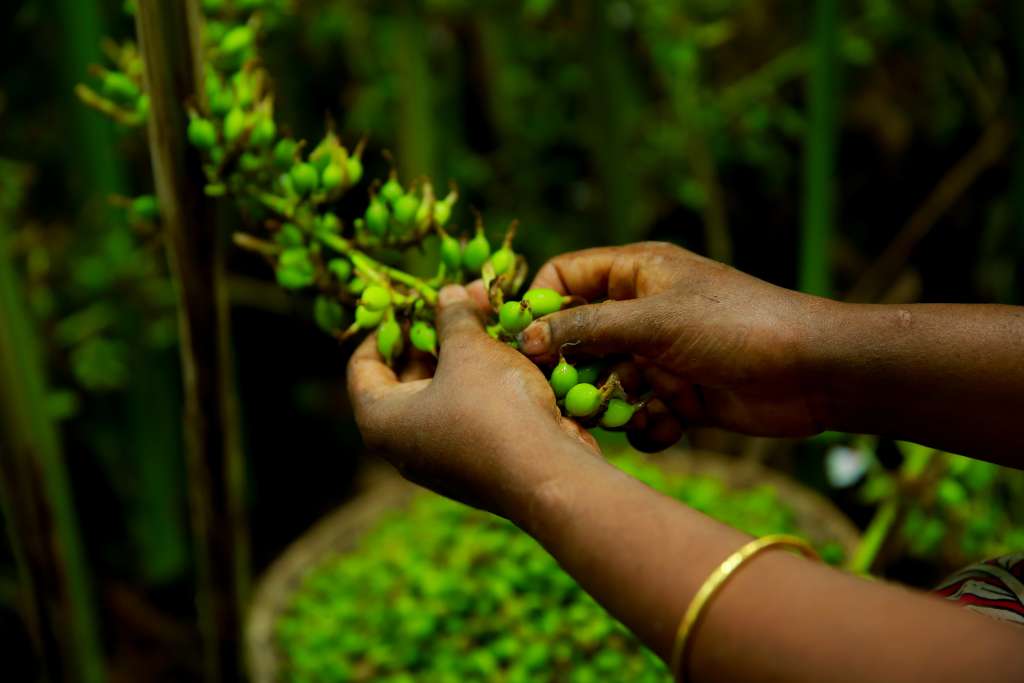Can this flavourful staple of the Indian kitchen survive the onslaught of changing agricultural practices and climate–and what does this mean for its habitat’s biodiversity?
As published in The Kodai Chronicle on 2 July, 2024.
In a tiny nook in my kitchen lies a small packet whose contents are firmly secured by taut rubber bands. Its verdant inhabitants are summoned on various occasions—when a regular cup of chai needs an upgrade, when payasam seeks that extra dash of flavour, or when, paired with bay leaves, cloves and cinnamon sticks, it is needed to create that magical flavour that makes any savoury dish sing with delight. Come rain or shine, green cardamom, fondly known as the ‘Queen of Spices’, never lets you down.
What we consume as green cardamom are the dried, ripe fruits of the perennial cardamom plant, which belongs to the ginger family. In India, choti elaichi, or small cardamom, as it is commonly known, is a native plant that grows mainly in the moist evergreen forests of the Western Ghats in Kerala, Tamil Nadu and Karnataka. The expensive tiny green pods are often crushed in a mortar and pestle to release the black seeds—the flavour bombs—that carry the spice’s complex signature flavor and aroma. I find it is a bit sweet and warm; a food writer describes it as ‘warm, pungent, earthy and rich’.
‘Whether it is everyday cooking or for a special occasion, cardamom always features,’ says Goya Journal co-founder Aysha Tanya, one half of the food blog Malabar Tea Room and a member of the Mappila community. ‘We begin by either sautéing onions or by sautéing cardamom and cloves. It’s also a big part of our desserts. The spice isn’t always in your face. If you’re eating a dish and can’t put your finger on that one flavour thrumming in the back, it’s probably cardamom. I can’t imagine our kitchens without it.’
Head over to The Kodai Chronicle to read the full story.
Cover image courtesy: Shabin Shajan/ Shutterstock
